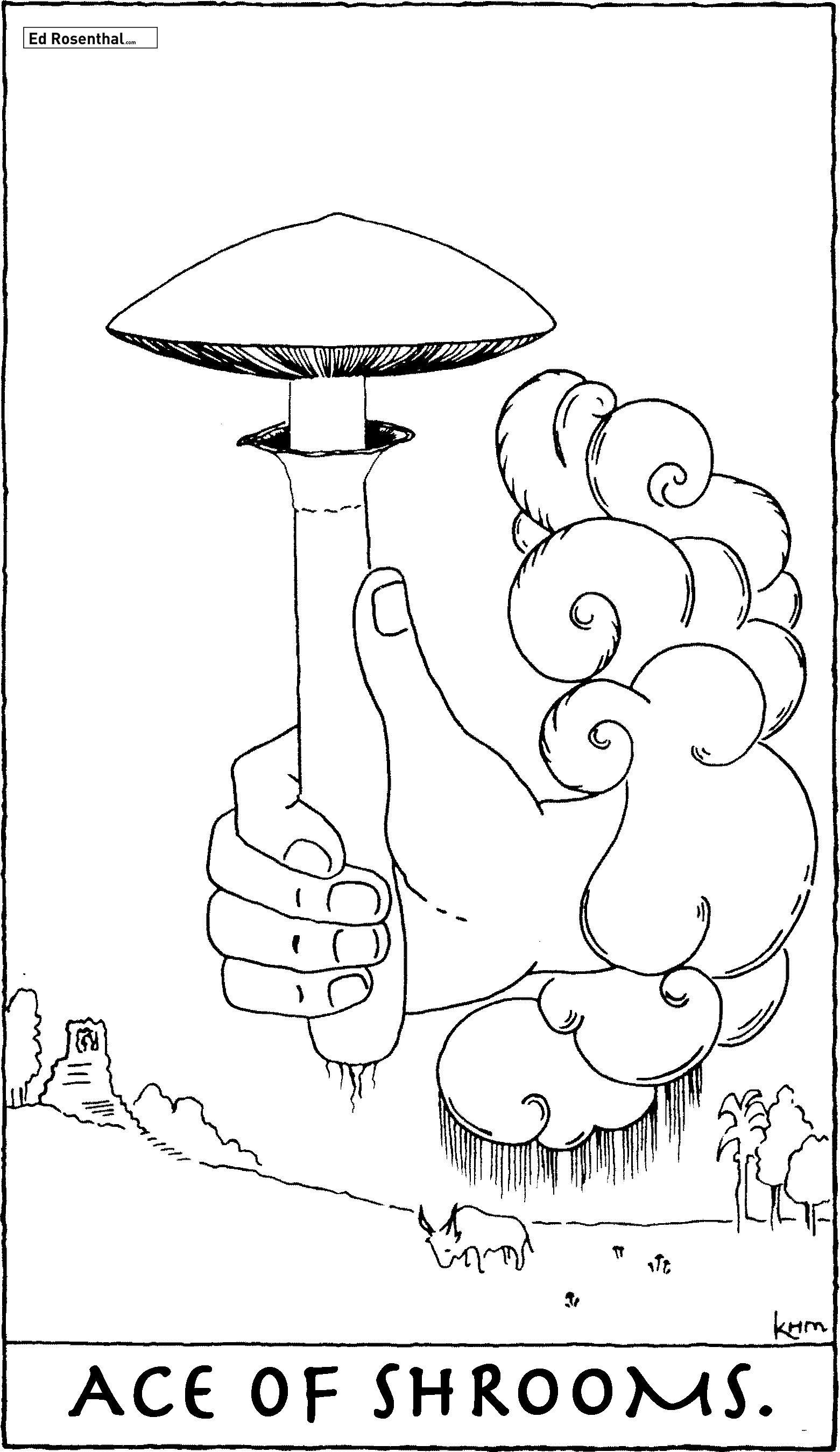Terence McKenna's Preface to ‘Psilocybin Magical Mushroom Grower’s Guide’
Terence McKenna’s ‘Psilocybin Magical Mushroom Grower’s Guide’
-Terence McKenna, 1985
It is not often that something as fragile and culture bound as a religious mystery can rise from the ashes of near extinction. Even the natural life of a religious mystery ends finally in erosion of connection to the mysterious driving power of some archetype. But few religious mysteries exist long enough to experience this decadence. Most are suppressed by dominant orthodoxies already in place or recently imported through conquest. This latter situation is an apt description of the status of the mushroom religion of Mesa-America at the time of the Spanish Conquest.
In the case of Mesa-American mushroom use, an ancient shamanic religion-of which we know next to nothing-confronted a Spanish Catholicism whose relatively advanced technology meant complete subjugation of the people, complete breakdown of the ancient gnosis. Practitioners of the mushroom cult were burned as heretics. The Indians' insistence on the mushroom as the "flesh of the gods" must have particularly excited the heretic-hunters and perhaps left them not a little uneasy as they went about their bloody business. After all, 11 flesh of the gods" is a claim explicitly made for the Christian Eucharist, yet it is not nearly so effective a visionary vehicle as the persecuted mushroom.
The use of the mushroom retreated to the remote mountainous peripheries of Spanish Mexico. The ritual itself was all but lost under a layer of Christianized associations.
“Mushrooms were called “Jesus” or “St. Peter” their old names, names of the planetary gods of the Mayans, forgotten. ”
Thus the matter stood for centuries. In the 1950s Wasson made the initial discovery of the slumbering mystery, and more than two decades of mostly academic “ethnomycological" study followed. This book, first published in 1976, opened a new phase in the rebirth of the mushroom religion by placing the knowledge of cultivation into the body of publicly available information. More than a hundred thousand copies of this book have been sold, it has spawned several imitations, and it continues to sell well. This means that there are now many thousands of mushroom cultivators in the world. It is reasonable to suppose that more people are now actively involved in a religious quest using psilocybin than ever before in history. This is a complete rebirth of a religious mystery and it has taken place in less than a decade! What are the implications of this emergence of a pagan mystery into the banal world of modernity? What are its implications for those closest to this decisive, historical shift, those who, by cultivating and teaching others how to cultivate, are making the change happen?
It is clear that pharmacology intends to provide the future with an ever-expanding repertoire of psychoactive chemicals. But I wonder whether what is needed are new drugs or the courage to shamanically apply the botanical hallucinogens already sanctioned by millenia of folk usage. Few of the productions of the laboratory will be found to be as somatically benign as psilocybin or to be so structurally analogous to those compounds naturally occurring in the human brain and responsible for" normal" consciousness.
“ Knowledge of how to cultivate is spreading through society in the same way that the mycelium spreads through rye in a jar or a bed of compost. ”
Once one has actually grown the mushroom, it becomes obvious that the mushroom uses the same strategy whether it is enveloping a petri dish or a society. A tiny part breaks away from the main body, it becomes a new center of radiative growth that expands until it reaches a critical limit, then it too spawns break-away particles with a life of their own. By this process, normally involving spores, but in cultivation involving propagation of mycelial strains, and on another level involving the teaching of cultivation techniques by one person to another, the mushroom makes its way in the world.
This implies an analogy: That knowledge of how to cultivate is spreading through society in the same way that the mycelium spreads through rye in a jar or a bed of compost. There is an apocalyptic corollary: When the technique is ubiquitous in society, "fruiting" will occur, meaning the real power and import of humanity's relationship to the mushroom will be suddenly revealed.
‘Psilocybin Magical Mushroom Grower’s Guide’ is respectfully dedicated to R. Gordon Wasson and Albert Hofmann, whose investigations of the botany and chemistry of the magic mushroom brought psilocybin to the world.
“At last you know what the ineffable is, and what ecstasy means.”
Do you want to learn how to cultivate mushrooms?
In the 1970s two of the most influential thinkers of the psychedelic era, Terrence McKenna & his brother, gathered what was then known about psilocybin botany and culture and presented it in:
Psilocybin: Magic Mushroom Grower’s Guide
I own the rights to this classic.
I re-printed a limited number & put together a special:





